


xxxxxAs we have
seen, the French poet, novelist and dramatist Victor Hugo produced
one of his best-known novels, The
Hunchback of Notre Dame in 1831
(W4). This, together with his many other
works made him the undisputed leader of the French romantic
movement. His most productive years were from 1830, but in 1843
the death of one of his daughters in a boating accident brought a
temporary stop to his writing. He served in the government of
Louis Philippe,
but by the time Napoleon III seized power in 1851 he was a
confirmed republican. He took refuge on the island of Guernsey,
and from there launched a scathing attack upon the “little
Napoleon” in both verse and prose. In 1862 he published his other famous novel, Les
Misérables, a story full of drama and pathos, set in the
Paris underworld of contemporary France.
This moving tale about social injustice
gave full scope to his remarkable powers of description and his
deep, sympathetic understanding of human nature. And also produced
during this period was some of his finest poetry - notably
his Les Contemplations -, and his
novels, Toilers of the Sea and The
Man Who Laughs, set in 17th century England. On his
return to France in 1870, following his country’s defeat in the
Franco-Prussian War, he was hailed as a national hero, and,
for a time, served in the Senate of the Third Republic. A notable
work in these later years was his Quatrevingt-treize,
a powerful novel describing the momentous events of the
year 1793. When he died in 1885 his
state funeral was attended by some two million people, such was
the esteem in which this great man of letters, republican hero,
and man of the people, was held.
VICTOR HUGO 1802 -
1885 (G3c, G4, W4,
Va, Vb, Vc)
Acknowledgements
Hugo: bronze bust
by the French sculptor August Rodin (1840-1917). 1883 – Musée
Rodin, Paris. Hauteville: date and
artist unknown. Misérables: based on an
original portrait of “Cosette” by the French illustrator Emile
Bayard (1837-1891). Barricades:
illustration for Les Misérables by the
French artist Gustave Brion (1824-1877). Grandchildren: by the French photographer Achille Mélandri (1845-1905)
– Maison de Victor Hugo, Paris. Funeral:
1885, photographer unknown. Goncourts:
drawing by the French illustrator Paul Gavarni (1804-1866)
and printed in 1853 by Lemercier et Cie, Paris publishers 1803-1909
– National Library of France, Paris. Verlaine:
by the French artist Eugène Carrière (1849-1906), 1890 –
Musée d’Orsay, Paris. Rimbaud: by the
French photographer Étienne Carjat (1828-1906), c1872.
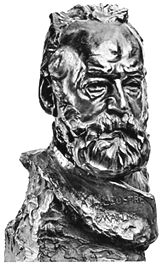
xxxxxAs we have
seen, Victor Hugo, the French poet, novelist and dramatist,
produced one of his best-known novels, The
Hunchback of Notre Dame in 1831
(W4). This melodrama, together with
works such as his verse play Hanant and
his drama The King’s Fool, made him the
undisputed leader of the French romantic movement. Indeed, the
preface to his first play Cromwell,
produced in 1838, is regarded as the manifesto of Romanticism, or,
as he put it, “the liberation of literature”. Not for him the
literary restraints imposed by Classicism, a fact clearly shown in
the 1820s by his extravagant prose romances (such as Bug
Jagal) and his exotic poems, like his Orientales.
(The sculpture is by the famous French artist Auguste Rodin).
xxxxxHis most
productive period began in 1830 with his poetic drama Hernani,
a play which, as from its opening night, provided a long and
bitter controversy between the Romanticists and the Classicists.
The next thirteen years saw a stream of successful productions,
beginning with The Hunchback of Notre Dame,
and including the prose dramas Lucrece Borgia
and Marie Tudor, the melodrama Ruy
Blas, and several volumes of contemplative verse, such as
Songs of Twilight. These works in
particular showed his descriptive skill, his deep, sympathetic
understanding of human nature, and his masterly command of
language.
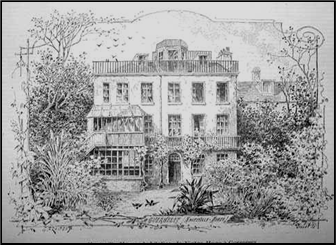 xxxxxBut the year 1843 was marred by disappointment and
sadness, brought about by the failure of his verse drama Les
Burgraves, and then the tragic death of one of his
daughters in a boating accident. Hugo was devastated, felt unable
to write, and turned to politics. A royalist at this juncture, he
accepted a post in the government of Louis Philippe in 1848, but
by the time Napoleon III had seized power in 1851 he was a
confirmed republican. As a result he was forced to flee the
country. In 1855, after taking refuge in Belgium and then the
island of Jersey in the Channel Islands, he eventually settled
down at St. Peter Port on the neighbouring island of Guernsey.
Hauteville House (illustrated) was to be his home until he returned to France in
1870 following the Franco-Prussian War and the fall of the
French Empire.
xxxxxBut the year 1843 was marred by disappointment and
sadness, brought about by the failure of his verse drama Les
Burgraves, and then the tragic death of one of his
daughters in a boating accident. Hugo was devastated, felt unable
to write, and turned to politics. A royalist at this juncture, he
accepted a post in the government of Louis Philippe in 1848, but
by the time Napoleon III had seized power in 1851 he was a
confirmed republican. As a result he was forced to flee the
country. In 1855, after taking refuge in Belgium and then the
island of Jersey in the Channel Islands, he eventually settled
down at St. Peter Port on the neighbouring island of Guernsey.
Hauteville House (illustrated) was to be his home until he returned to France in
1870 following the Franco-Prussian War and the fall of the
French Empire.
xxxxxOnce safe
in exile, Hugo wasted no time in denouncing the regime from
which he had fled. His pamphlets Napoléon le
Petit and Histoire d’un crime,
together with his collection of 97 poems entitled Les
Châtiments (The Punishments)
launched a scathing, intemperate attack upon the Second Empire in
general and Napoleon III in particular. The self-styled
Emperor was described as a man with blood on his hands, who lived
in splendour and cared nothing for the poverty and degradation
endured by the mass of his people.
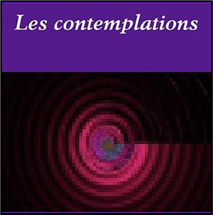 xxxxxIn contrast, another collection of poems, Les
Contemplations of 1856, won acclaim for the simplicity
and purity of their tone, the beauty of their expression, and the
depth of their thought. Likewise his Legend of
the Centuries of 1859, a series of pictorial poems
illustrating man’s struggle between good and evil through the
ages, was well received. And later, as if to show the width of his
poetic powers, came Chansons des rues et des
bois (Songs of the streets and woods),
a collection of light, witty verse centred around his fleeting,
uncomplicated affairs with young maids and country girls. And also
belonging to this period was Les Travailleurs
de la Mer of 1866 (The Toilers of the
Sea), a passionate tale of man’s battle against the
waves, set appropriately in a Guernsey fishing community. Later
came an essay on William Shakespeare and The
Man Who Laughs, a novel set in 17th century England.
xxxxxIn contrast, another collection of poems, Les
Contemplations of 1856, won acclaim for the simplicity
and purity of their tone, the beauty of their expression, and the
depth of their thought. Likewise his Legend of
the Centuries of 1859, a series of pictorial poems
illustrating man’s struggle between good and evil through the
ages, was well received. And later, as if to show the width of his
poetic powers, came Chansons des rues et des
bois (Songs of the streets and woods),
a collection of light, witty verse centred around his fleeting,
uncomplicated affairs with young maids and country girls. And also
belonging to this period was Les Travailleurs
de la Mer of 1866 (The Toilers of the
Sea), a passionate tale of man’s battle against the
waves, set appropriately in a Guernsey fishing community. Later
came an essay on William Shakespeare and The
Man Who Laughs, a novel set in 17th century England.
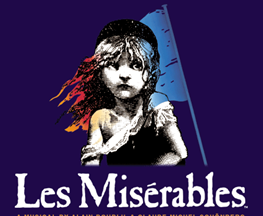 xxxxxBut his major work while in exile was undoubtedly Les Misérables (The
Wretched), an historical prose romance which he had been
working on for many years and was eventually published in 1862.
A story about social injustice in contemporary, strife-ridden
France, it takes place for the most part in the Parisian
underworld - including, at one point, a dramatic flight
through the city’s sewers. It contains numerous plots, some only
broadly developed, and these are centred around the trials and
tribulations of Jean Valjean, a man who, having spent nineteen
years in prison - initially for stealing a loaf of bread -
gains a respectable position in society, but finds that he cannot
escape his past. Despite his good intentions, he is hounded by the
law in the person of police inspector Javert, and both meet their
deaths in the closing pages of the drama. The most endearing
character is Cosette, who, maltreated as a young girl, is cared
for by Valjean, and finally finds happiness with Marius Pontmercy,
a rebel who, like Hugo himself, becomes a republican in the cause
of freedom.
xxxxxBut his major work while in exile was undoubtedly Les Misérables (The
Wretched), an historical prose romance which he had been
working on for many years and was eventually published in 1862.
A story about social injustice in contemporary, strife-ridden
France, it takes place for the most part in the Parisian
underworld - including, at one point, a dramatic flight
through the city’s sewers. It contains numerous plots, some only
broadly developed, and these are centred around the trials and
tribulations of Jean Valjean, a man who, having spent nineteen
years in prison - initially for stealing a loaf of bread -
gains a respectable position in society, but finds that he cannot
escape his past. Despite his good intentions, he is hounded by the
law in the person of police inspector Javert, and both meet their
deaths in the closing pages of the drama. The most endearing
character is Cosette, who, maltreated as a young girl, is cared
for by Valjean, and finally finds happiness with Marius Pontmercy,
a rebel who, like Hugo himself, becomes a republican in the cause
of freedom.
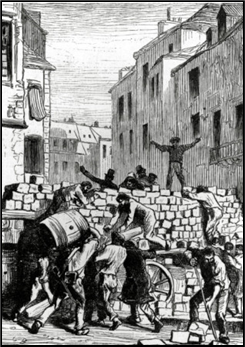
xxxxxThis
panoramic view of French life, full of dramatic incident and
pathos, proved the perfect vehicle for Hugo’s remarkable powers of
description and his abiding sympathy for the poor and oppressed.
It contained, too, his own thoughts on religion, politics and
everyday affairs, together with some lengthy digressions, notably
his own account of the Battle of Waterloo. Received with
enthusiasm, the book earned him fame both at home and abroad.
xxxxxIn 1870,
with France having been defeated at the hands of the Prussians,
Hugo returned home a national hero, hailed as the man who had
waged a war of words against the Second Empire and helped to bring
about its downfall. He became a senator under the Third Republic,
but distress within his family took its toll. Having lost his wife
Adèle in 1868, the deaths of two of his sons and the mental
sickness of his daughter Adèle in the early 1870s sapped his
creative energy. In these final years, he wrote a number of
novels, several volumes of poetry, and a play, but in general they
lacked the master touch.
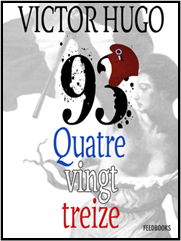
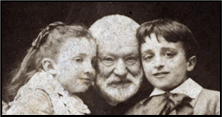 xxxxxHowever, this said, his last novel, Quatrevingt-treize,
produced in 1874 and graphically depicting the momentous events of
1793, is regarded by many today as one of his finest works, and by
some as his masterpiece. And worthy of note is his charming The Art of Being a Grandfather, published in
1877, and his four act drama Torquemada
of 1882, a play condemning religious fanaticism via the Spanish
Inquisition. During a life-time of writing Hugo produced
seven novels, 21 plays, and 18 volumes of poetry. (Hugo pictured here with his grandchildren).
xxxxxHowever, this said, his last novel, Quatrevingt-treize,
produced in 1874 and graphically depicting the momentous events of
1793, is regarded by many today as one of his finest works, and by
some as his masterpiece. And worthy of note is his charming The Art of Being a Grandfather, published in
1877, and his four act drama Torquemada
of 1882, a play condemning religious fanaticism via the Spanish
Inquisition. During a life-time of writing Hugo produced
seven novels, 21 plays, and 18 volumes of poetry. (Hugo pictured here with his grandchildren).
xxxxxIn 1878
Hugo suffered a rather severe stroke, but this did not stop Paris
from celebrating his eightieth year in unforgettable style. In one
of the largest parades ever held in the city, thousands upon
thousands of people walked down the Champs Élysées to the centre
of Paris, passing by his house in the Avenue d’Eylau (renamed
Victor Hugo that year), where he sat at one of the windows. It was
a rare and moving show of affection for a man of the people. He
died in 188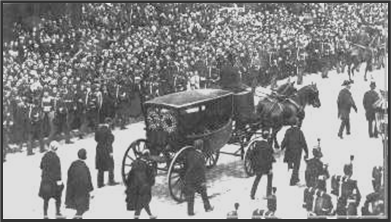 5,
two years after the death of his long-time mistress Juliette
Drouet. His body was laid in state beneath the Arc de Triomphe,
and then carried on a hearse down the Champs Élysées (illustrated) for burial in the
Panthéon. It is estimated that some two million people lined the
route to pay homage to the man who was not only one of France’s
greatest men of letters - a novelist and a poet of enormous
talent - but also a symbol for so many years of his country’s
struggle towards republicanism. He cared for the people and, at his
end, the people showed that they cared for him.
5,
two years after the death of his long-time mistress Juliette
Drouet. His body was laid in state beneath the Arc de Triomphe,
and then carried on a hearse down the Champs Élysées (illustrated) for burial in the
Panthéon. It is estimated that some two million people lined the
route to pay homage to the man who was not only one of France’s
greatest men of letters - a novelist and a poet of enormous
talent - but also a symbol for so many years of his country’s
struggle towards republicanism. He cared for the people and, at his
end, the people showed that they cared for him.
xxxxxIncidentally, having arrived in Paris in 1870, Hugo found himself
caught up in the siege of Paris. Later, in his poem L’Année
terrible, he described the suffering caused by that event
during what he called “the terrible year”. There was a severe
shortage of food but, as a celebrity, he was provided with meat
from the Paris zoo until supplies ran out. ……
xxxxx……xA number of operas were based on his works, including
Donizetti’s opera Lucrezia Borgia and
Verdi’s Rigoletto, and many of his
poems were set to music by Berlioz, Bizet, Saint-Saens,
Massenet and Wagner. He himself enjoyed music. He greatly admired
the works of Beethoven, and he liked the music of Gluck and Weber.
As noted earlier, he numbered among his literary friends 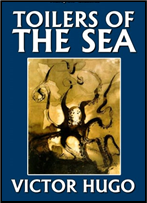 Lamartine,
Vigny, Musset, Mérimée and Gautier. ……
Lamartine,
Vigny, Musset, Mérimée and Gautier. ……
Xxxxx……xHis novel Toilers of the Sea,
written while in Guernsey, had an unexpected impact on social
behaviour. Its lurid account of strange creatures lurking in deep
waters made fashionable an interest in squids. Squid parties and
the wearing of squid hats became popular for a time! ……
xxxxx……xHugo has the distinction of providing the briefest
correspondence in history. After Les
Misérables was produced in 1862, he sent a letter to his
publisher to enquire as to its reception. The letter simply
contained a question mark. The publisher replied by a letter which
simply contained an exclamation mark! As indicated, the novel’s
success was immense, and became even more so towards the end of
the 20th century when it was adapted as a musical. It was first
staged in Paris in 1980 and opened in London five years later. It
was still running over twenty years later, and a film was made of
it in 2012. ……
xxxxx……xHugo was also a proficient ar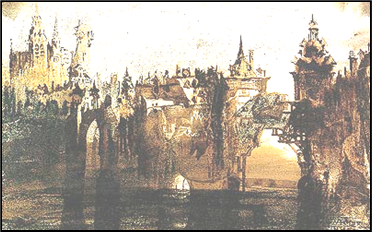 tist
and during his lifetime produced more than 4,000 small-scale
drawings in brown or black pen and ink, many abstract in form.
These were praised by no less than Delacroix and Van Gogh.
Illustrated here is Town with a tumbledown
bridge. ……
tist
and during his lifetime produced more than 4,000 small-scale
drawings in brown or black pen and ink, many abstract in form.
These were praised by no less than Delacroix and Van Gogh.
Illustrated here is Town with a tumbledown
bridge. ……
……xIn St. Peter Port, Guernsey, Hauteville House, his
home for many years, is now a museum to his memory, and there is
an imposing statue of him in the Candie Gardens, overlooking the
harbour, the work of the Breton sculptor Jean Boucher in 1914. In
Paris his house on the Avenue Victor Hugo is also a museum, and a
square and metro station are also named after him. Needless to
say, there is hardly a town in France that does not have a street
named in his honour.
Including:
The Goncourt Brothers,
Paul
Verlaine and
Arthur Rimbaud

xxxxxThe French Goncourt Brothers, Edmond
(1822-1896) and Jules (1830-1870), wrote a number of
works together, including a study of French society and art during
the 18th century, and six novels. Notable among their
fiction were Germinie Lacerteux and Madame Gervaisais, works which marked them
out as pioneers in naturalism - exposing in blunt terms the
harsh, sordid side of life. They also collaborated in the writing
of a personal Journal. This brutally
frank account of the social and literary life of Paris from 1851
to 1896 was full of gossip, anecdotes and criticism of the leading
celebrities of the day. At his death Edmond bequeathed his estate
to the founding of the Académie Goncourt
and from 1903 this has awarded the Prix
Goncourt to the best French fiction writer of the year.
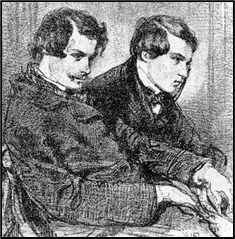
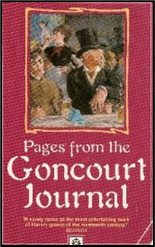 xxxxxThe French Goncourt
Brothers, Edmond (1822-1896) and
Jules (1830-1870), began working together as watercolour
artists in the 1850s, but they then turned their attention to
social history and art criticism. Their detailed study of French
society and French art during the 18th century was remarkable for
the thoroughness of their research, and was generally well
received. However, success was less marked when they collaborated
in the writing of six novels. In this field they were working in
the shadow of the great Émile Zola. Nonetheless, as realistic
novelists like him, they were pioneers in naturalism, exposing in
blunt terms the harsh, sordid side of life. Two of their works are
especially worthy of mention. Germinie
Lacerteux, published in 1865, depicted the miserable life
led by the lower classes - very much in the Hugo mould in
that respect - and Madame Gervaisais,
produced four years later, was another story of degradation, woven
around religious mania.
xxxxxThe French Goncourt
Brothers, Edmond (1822-1896) and
Jules (1830-1870), began working together as watercolour
artists in the 1850s, but they then turned their attention to
social history and art criticism. Their detailed study of French
society and French art during the 18th century was remarkable for
the thoroughness of their research, and was generally well
received. However, success was less marked when they collaborated
in the writing of six novels. In this field they were working in
the shadow of the great Émile Zola. Nonetheless, as realistic
novelists like him, they were pioneers in naturalism, exposing in
blunt terms the harsh, sordid side of life. Two of their works are
especially worthy of mention. Germinie
Lacerteux, published in 1865, depicted the miserable life
led by the lower classes - very much in the Hugo mould in
that respect - and Madame Gervaisais,
produced four years later, was another story of degradation, woven
around religious mania.
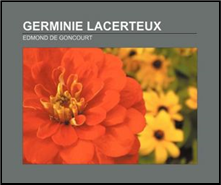 xxxxxMore enduring in time and value, however, were the
nine volumes of their personal Journal,
begun in 1851 and kept up to within twelve days of Edmond’s death
in July 1896. Providing a detailed peepshow of social and literary
life in Paris during the “belle époque”, it was full of gossip,
anecdotes and cruel criticism of friend and foe alike. Among the
many who suffered from their barbs were the writers Hugo,
Flaubert, Baudelaire and Zola, the artist Degas, and the sculptor
Rodin. Few if any daily chronicles of society have been so
colourful, so vengeful and so brutally frank. Both brothers considered that their work was not appreciated
enough, and this doubtless accounts for the strength and scope of
their invective.
xxxxxMore enduring in time and value, however, were the
nine volumes of their personal Journal,
begun in 1851 and kept up to within twelve days of Edmond’s death
in July 1896. Providing a detailed peepshow of social and literary
life in Paris during the “belle époque”, it was full of gossip,
anecdotes and cruel criticism of friend and foe alike. Among the
many who suffered from their barbs were the writers Hugo,
Flaubert, Baudelaire and Zola, the artist Degas, and the sculptor
Rodin. Few if any daily chronicles of society have been so
colourful, so vengeful and so brutally frank. Both brothers considered that their work was not appreciated
enough, and this doubtless accounts for the strength and scope of
their invective.
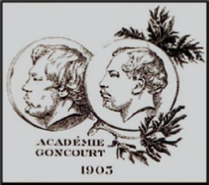
xxxxxEdmond, who
outlived his brother by over twenty-five years, went on to
produce his own novels - notably La Fille
Élisa and Chérie -, and
he did eventually ensure that the name of Goncourt lived on. Whenxhe died he bequeathed his entire estate for the
founding of the Goncourt
Academy. Since
1903 this has awarded the Prix Goncourt
- the most prestigious award in French literature - to
the author of “the best imaginary prose work of the year”.
xxxxxAnother
important French poet of this period was Paul
Verlaine (1844-1896). At the age of
14 he sent his first poem, La Mort, to
Victor Hugo. He gained fame with his Poèmes
Saturniens of 1866, and during his career produced Fêtes galantes, La Bonne
Chanson, Romances sans paroles
and Sagesse. His poetry, inspired by
unconscious forces such as dreams, imagination and delirium,
marked him out as the leader of the early Symbolists. His ideas
were summarized in his L’Art poétique of
1884. In his private life, his torrid love affair with the young
poet Arthur Rimbaud ended in violence in 1873 and two years in
prison. In his later years he took to drink and drugs, and lived
in poverty, but his contribution to poetry was recognised. In the
mid-1880s he drew attention to the work of Rimbaud, and
published some of the young poet’s verse. These were well received
and put Rimbaud at the head of a new literary movement.
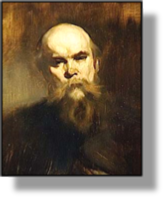 xxxxxAnd another outstanding French poet of this period
was Paul Verlaine
(1844-1896). At the age of 14 he sent his first poem, La Mort, to the great Victor Hugo. His Poèmes saturniens of 1866, noted for their
musical quality and delicate harmonies, marked him out as a poet
of promise, but his degenerate private life impeded his progress.
In 1872 he abandoned his wife and young child to live with the
young poet Arthur Rimbaud. Their love affair, however, was a very
stormy and debauched one, and ended the following year when,
during a violent quarrel, Verlaine shot Rimbaud in the hand. He
was sentenced to two years in prison for attempted murder ,and it
was after this, while teaching in England in 1880, that he
produced Sagesse, a selection of
successful poems inspired by his conversion to Roman Catholicism.
xxxxxAnd another outstanding French poet of this period
was Paul Verlaine
(1844-1896). At the age of 14 he sent his first poem, La Mort, to the great Victor Hugo. His Poèmes saturniens of 1866, noted for their
musical quality and delicate harmonies, marked him out as a poet
of promise, but his degenerate private life impeded his progress.
In 1872 he abandoned his wife and young child to live with the
young poet Arthur Rimbaud. Their love affair, however, was a very
stormy and debauched one, and ended the following year when,
during a violent quarrel, Verlaine shot Rimbaud in the hand. He
was sentenced to two years in prison for attempted murder ,and it
was after this, while teaching in England in 1880, that he
produced Sagesse, a selection of
successful poems inspired by his conversion to Roman Catholicism.
xxxxxHe returned
to France in 1877, and it was while working as a teacher at Rethel
in north-eastern France that he became infatuated with one of
his pupils, Lucien Letinois. This liaison inspired Verlaine to
write more poetry, but his young lover’s sudden death through
typhus in 1883 was a blow from which he never really recovered. In
his final years he took to drink and drugs, and ended up poverty
stricken, but his peers recognised the originality of his work and
elected him France’s “Prince of Poets” two years before his death.
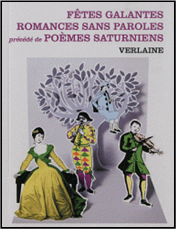
xxxxxVerlaine
was a leader of the early Symbolists, his inspiration moulded by
unconscious forces such as dreams, imagination and delirium, and
captured through the magic of words and the cadence of verse. The
nature of his poetry - which is difficult if not impossible
to translate - was summed up in his L’art
Poétique in 1884. Other major works included Fêtes
galantes (inspired by the paintings of Watteau), La
Bonne Chanson and Romances sans
paroles, verses composed whilst in prison. His
autobiographical prose, - My Hospitals, My Prisons
and Confessions - was all written
in the 1890s. In the mid-1880s he drew attention to the work
of Rimbaud in his Accursed Poets, and
published some of the young poet’s verse, including his prose
poems Illuminations. These were well
received and established Rimbaud at the head of a new literary
movement.
xxxxxThe French
composer Gabriel Fauré set many of Verlaine’s poems to music, and
Claude Debussy put music to five of his poems from Fêtes
galantes as part of his collection entitled Récueil
Vasnier.
xxxxxThe violent
quarrel with Paul Verlaine in 1873 virtually put an end to the
poetic career of the young French poet Arthur
Rimbaud (1854-1891). A precursor of
surrealism, he saw the poet as a seer who, by a long “derailment
of all the senses” would come to know the unknown and would let
his visions be seen through his verse. His major poems, all
written before the age of twenty, included Letters
of the Voyant (in which he sets out his poetic doctrine),
The Drunken Ship, A
Season in Hell - an account of his torrid love
affair with Verlaine -, and his cycle of prose poems entitled
Illuminations. After the break with
Verlaine he travelled extensively in Europe and the Middle East,
but was taken ill with cancer in 1891, and died at the age of
thirty-seven. In the meantime, however, the publication of a
number his poems by Verlaine in the mid-1880s brought him
fame at home, where he was seen as the leader of a new literary
movement.
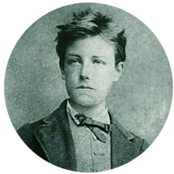 xxxxxThe violent quarrel with Paul Verlaine in 1873
virtually put an end to the poetic career of Arthur
Rimbaud (1854-1891). Troubled and
restless, he chose to live the life of a nomad. He travelled
extensively in Europe, mostly on foot, and then, as a member of
the Dutch colonial army, spent some time in Java. After this, he
took up various jobs in Cyprus and Aden before working as a
merchant in Harar in eastern Ethiopia. It was there that he was
taken ill. He returned to France in 1891 and died of cancer in the
November, just a month after his 37th birthday. In the meantime,
however, Verlaine published a number of his poems in the mid-1880s
- including his prose poems Illuminations
- and these brought him fame at home, where he was seen as
the leader of a new literary genre.
xxxxxThe violent quarrel with Paul Verlaine in 1873
virtually put an end to the poetic career of Arthur
Rimbaud (1854-1891). Troubled and
restless, he chose to live the life of a nomad. He travelled
extensively in Europe, mostly on foot, and then, as a member of
the Dutch colonial army, spent some time in Java. After this, he
took up various jobs in Cyprus and Aden before working as a
merchant in Harar in eastern Ethiopia. It was there that he was
taken ill. He returned to France in 1891 and died of cancer in the
November, just a month after his 37th birthday. In the meantime,
however, Verlaine published a number of his poems in the mid-1880s
- including his prose poems Illuminations
- and these brought him fame at home, where he was seen as
the leader of a new literary genre.
xxxxxRimbaud was
born in Charleville in the Ardennes, north-eastern France,
and was brought up under the guidance of a tyrannical mother. He
was a precocious child - Victor Hugo
called him “un enfant Shakespeare” -
but the outbreak of the Franco-Prussian War in 1870 put an
end to his formal education. It was then that he rebelled against
his strict upbringing. He joined the National Guard for a short
period of time, and then took to the road, living rough, despising
conventional society, and enjoying his new-found freedom. His
behaviour became outlandish and some of his verse was
provocatively obscene.
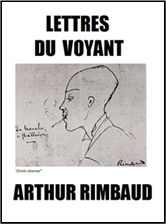 xxxxxHis serious compositions during this period, such as
his Sensation and Ophelia,
were fairly conventional in form and much in the style of
Baudelaire, but by May 1871, fired by the revolution taking place
in Paris - the Commune - he had dismissed traditional
poetic form and was drawing up his own manifesto for a revolution
based on a poetic mould that was freed from all influences. In his
Lettres du voyant of 1871, he declared that the poet must become
a seer by means of “a long, immense and calculated derailment of
all the senses”. Then, as the supreme “Savant”, he would come to
know the unknown - that which lay beneath the surface of so-called
reality - and he could then let his visions be seen through
his verse. Poetry would not merely set actions to rhythms, but
would itself take action and assume the lead. His Le
Bateau ivre (The Drunken Boat),
composed soon afterwards, was a visionary piece, full of imagery
and metaphors, which demonstrated his avant-garde doctrine.
It came to be seen as a precursor of surrealism.
xxxxxHis serious compositions during this period, such as
his Sensation and Ophelia,
were fairly conventional in form and much in the style of
Baudelaire, but by May 1871, fired by the revolution taking place
in Paris - the Commune - he had dismissed traditional
poetic form and was drawing up his own manifesto for a revolution
based on a poetic mould that was freed from all influences. In his
Lettres du voyant of 1871, he declared that the poet must become
a seer by means of “a long, immense and calculated derailment of
all the senses”. Then, as the supreme “Savant”, he would come to
know the unknown - that which lay beneath the surface of so-called
reality - and he could then let his visions be seen through
his verse. Poetry would not merely set actions to rhythms, but
would itself take action and assume the lead. His Le
Bateau ivre (The Drunken Boat),
composed soon afterwards, was a visionary piece, full of imagery
and metaphors, which demonstrated his avant-garde doctrine.
It came to be seen as a precursor of surrealism.
xxxxxIn August
1871 Rimbaud sent examples of his new poetry to Verlaine, and this
led to their meeting and their torrid love affair. This came to a
tragic finale in 1873 and, by the following year, it had also
brought an end to his career as a poet. In was then that he took
to a wandering life. His other major works, all composed before
the age of twenty, were Une Saison en Enfer
(A Season in Hell) - an account of
his troubled life with Verlaine - and his Illuminations,
a cycle of prose poems, some of which were written during visits
he and Verlaine made to London in late 1872 and early 1873.
Vb-1862-1880-Vb-1862-1880-Vb-1862-1880-Vb-1862-1880-Vb-1862-1880-Vb-1862-1880-Vb







 xxxxxBut the year 1843 was marred by disappointment and
sadness, brought about by the failure of his verse drama Les
Burgraves, and then the tragic death of one of his
daughters in a boating accident. Hugo was devastated, felt unable
to write, and turned to politics. A royalist at this juncture, he
accepted a post in the government of Louis Philippe in 1848, but
by the time Napoleon III had seized power in 1851 he was a
confirmed republican. As a result he was forced to flee the
country. In 1855, after taking refuge in Belgium and then the
island of Jersey in the Channel Islands, he eventually settled
down at St. Peter Port on the neighbouring island of Guernsey.
Hauteville House (illustrated) was to be his home until he returned to France in
1870 following the Franco-
xxxxxBut the year 1843 was marred by disappointment and
sadness, brought about by the failure of his verse drama Les
Burgraves, and then the tragic death of one of his
daughters in a boating accident. Hugo was devastated, felt unable
to write, and turned to politics. A royalist at this juncture, he
accepted a post in the government of Louis Philippe in 1848, but
by the time Napoleon III had seized power in 1851 he was a
confirmed republican. As a result he was forced to flee the
country. In 1855, after taking refuge in Belgium and then the
island of Jersey in the Channel Islands, he eventually settled
down at St. Peter Port on the neighbouring island of Guernsey.
Hauteville House (illustrated) was to be his home until he returned to France in
1870 following the Franco- xxxxxIn contrast, another collection of poems, Les
Contemplations of 1856, won acclaim for the simplicity
and purity of their tone, the beauty of their expression, and the
depth of their thought. Likewise his Legend of
the Centuries of 1859, a series of pictorial poems
illustrating man’s struggle between good and evil through the
ages, was well received. And later, as if to show the width of his
poetic powers, came Chansons des rues et des
bois (Songs of the streets and woods),
a collection of light, witty verse centred around his fleeting,
uncomplicated affairs with young maids and country girls. And also
belonging to this period was Les Travailleurs
de la Mer of 1866 (The Toilers of the
Sea), a passionate tale of man’s battle against the
waves, set appropriately in a Guernsey fishing community. Later
came an essay on William Shakespeare and The
Man Who Laughs, a novel set in 17th century England.
xxxxxIn contrast, another collection of poems, Les
Contemplations of 1856, won acclaim for the simplicity
and purity of their tone, the beauty of their expression, and the
depth of their thought. Likewise his Legend of
the Centuries of 1859, a series of pictorial poems
illustrating man’s struggle between good and evil through the
ages, was well received. And later, as if to show the width of his
poetic powers, came Chansons des rues et des
bois (Songs of the streets and woods),
a collection of light, witty verse centred around his fleeting,
uncomplicated affairs with young maids and country girls. And also
belonging to this period was Les Travailleurs
de la Mer of 1866 (The Toilers of the
Sea), a passionate tale of man’s battle against the
waves, set appropriately in a Guernsey fishing community. Later
came an essay on William Shakespeare and The
Man Who Laughs, a novel set in 17th century England. xxxxxBut his major work while in exile was undoubtedly Les Misérables (The
Wretched), an historical prose romance which he had been
working on for many years and was eventually published in 1862.
A story about social injustice in contemporary, strife-
xxxxxBut his major work while in exile was undoubtedly Les Misérables (The
Wretched), an historical prose romance which he had been
working on for many years and was eventually published in 1862.
A story about social injustice in contemporary, strife-

 xxxxxHowever, this said, his last novel, Quatrevingt-
xxxxxHowever, this said, his last novel, Quatrevingt- 5,
two years after the death of his long-
5,
two years after the death of his long- Lamartine,
Vigny, Musset, Mérimée and Gautier.
Lamartine,
Vigny, Musset, Mérimée and Gautier.  tist
and during his lifetime produced more than 4,000 small-
tist
and during his lifetime produced more than 4,000 small-

 xxxxxThe French Goncourt
Brothers, Edmond (1822-
xxxxxThe French Goncourt
Brothers, Edmond (1822- xxxxxMore enduring in time and value, however, were the
nine volumes of their personal Journal,
begun in 1851 and kept up to within twelve days of Edmond’s death
in July 1896. Providing a detailed peepshow of social and literary
life in Paris during the “belle époque”, it was full of gossip,
anecdotes and cruel criticism of friend and foe alike. Among the
many who suffered from their barbs were the writers Hugo,
Flaubert, Baudelaire and Zola, the artist Degas, and the sculptor
Rodin. Few if any daily chronicles of society have been so
colourful, so vengeful and so brutally frank. Both brothers considered that their work was not appreciated
enough, and this doubtless accounts for the strength and scope of
their invective.
xxxxxMore enduring in time and value, however, were the
nine volumes of their personal Journal,
begun in 1851 and kept up to within twelve days of Edmond’s death
in July 1896. Providing a detailed peepshow of social and literary
life in Paris during the “belle époque”, it was full of gossip,
anecdotes and cruel criticism of friend and foe alike. Among the
many who suffered from their barbs were the writers Hugo,
Flaubert, Baudelaire and Zola, the artist Degas, and the sculptor
Rodin. Few if any daily chronicles of society have been so
colourful, so vengeful and so brutally frank. Both brothers considered that their work was not appreciated
enough, and this doubtless accounts for the strength and scope of
their invective. 
 xxxxxAnd another outstanding French poet of this period
was Paul Verlaine
(1844-
xxxxxAnd another outstanding French poet of this period
was Paul Verlaine
(1844-
 xxxxxThe violent quarrel with Paul Verlaine in 1873
virtually put an end to the poetic career of Arthur
Rimbaud (1854-
xxxxxThe violent quarrel with Paul Verlaine in 1873
virtually put an end to the poetic career of Arthur
Rimbaud (1854- xxxxxHis serious compositions during this period, such as
his Sensation and Ophelia,
were fairly conventional in form and much in the style of
Baudelaire, but by May 1871, fired by the revolution taking place
in Paris -
xxxxxHis serious compositions during this period, such as
his Sensation and Ophelia,
were fairly conventional in form and much in the style of
Baudelaire, but by May 1871, fired by the revolution taking place
in Paris -

